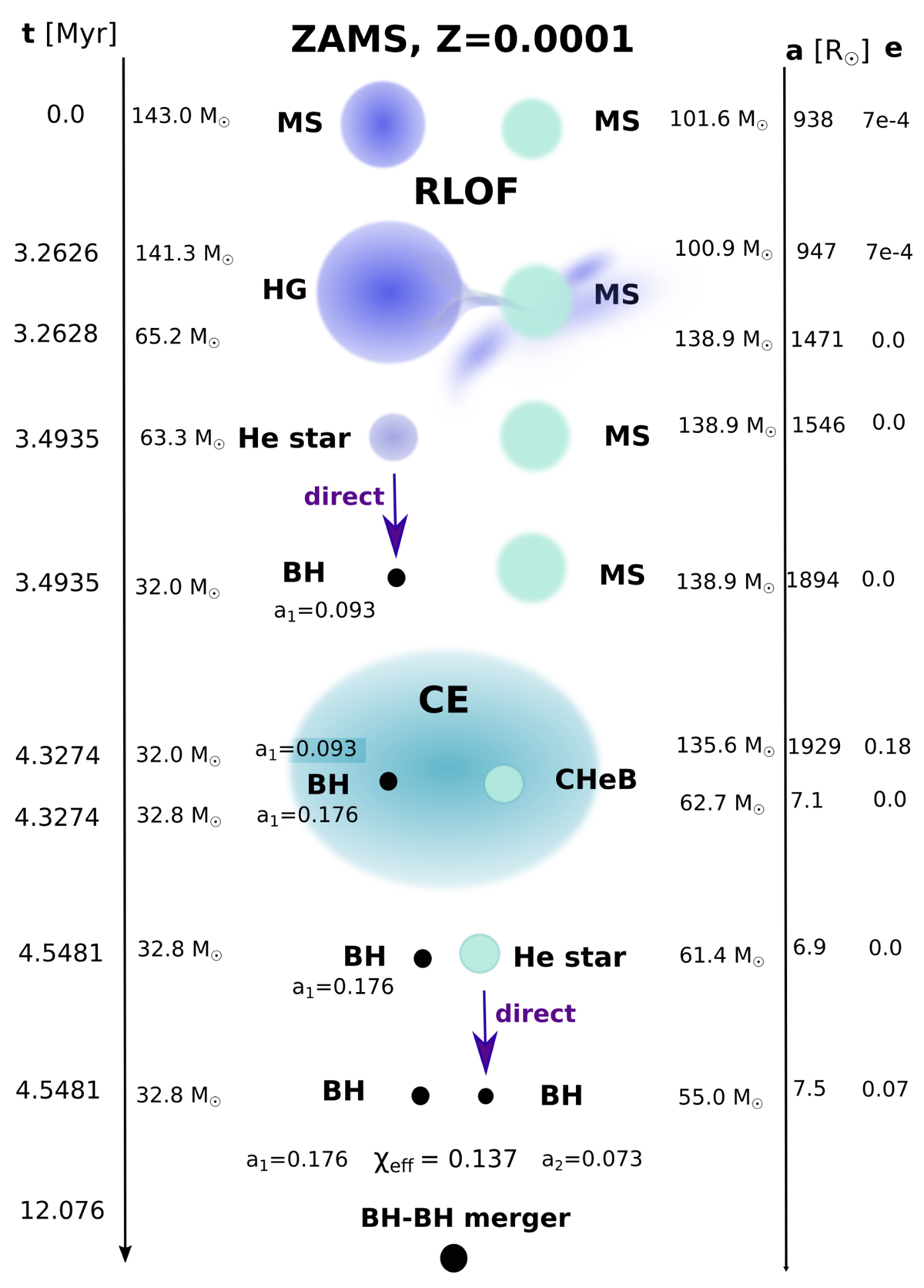Fig. 9.

Example of a possible route leading to the formation of a BH-BH merger similar to GW170729. This example follows the classical isolated binary evolution channel. In this model (M30.B) we employ the MESA BH natal spins, assume that massive BHs do not receive natal kicks and that their spins are aligned with the binary angular momentum (Θ1 = Θ2 = 0°), producing an upper limit on the effective spin parameter (χeff). We note that given the small binary separation at the BH-WR stage (a ≈ 7 R⊙), the WR star is most likely going to become tidally synchronized (see Sect. 2.5). If we assume that the rapidly rotating WR star collapses into rapidly spinning BH (aspin2 = 1) then the effective spin of the presented system would increase from χeff = 0.137 (no tidal spin-up; presented in the figure) to χeff = 0.484 (full tidal spin-up). Both values are within the LIGO/Virgo 90% credible limits for GW170729 [0.11:0.57]. Both BH masses are also within the limits: MBH1 = 50.6 M⊙ [40.4:67.2] and MBH2 = 34.3 M⊙ [24.2:43.4].
Current usage metrics show cumulative count of Article Views (full-text article views including HTML views, PDF and ePub downloads, according to the available data) and Abstracts Views on Vision4Press platform.
Data correspond to usage on the plateform after 2015. The current usage metrics is available 48-96 hours after online publication and is updated daily on week days.
Initial download of the metrics may take a while.


